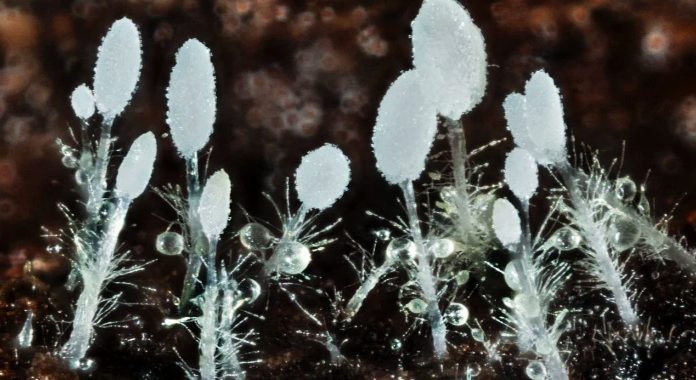
by Piter Kehoma Boll
The diversity of lifeforms on our planet is so great that today we still find new and peculiar forms even where we think we would not find anything new. This is the case of today’s species, Hirticlavula elegans, which I decided to call the hairy club fungus.
Found in Denmark and Norway since 1995, the hairy club fungus was only formally described in 2014 after the first successful sequencing of genetic material for phylogenetic studies. It belongs to the family Clavariaceae, whose species are known as club fungi, coral fungi or finger fungi, having conspicuous finger-like fruiting bodies that often occur in clusters.
In the hairy club fungus, however, the fruiting bodies are very peculiar. They are very small, barely reaching 1 mm in height, and consists of an ovoid white fertile head and a semitransparent stem with many straight hairs ponting upward and outward. These hairs originate from the outer hyphae that form the stem and are highly septate compared to similar hairs in other kind-of-closely related fungi.
But this is not the only way that the hairy club fungus is different from other species in Clavariaceae. While most species in this family are biotrophic, i.e., feed on live matter, as parasites or other forms of symbiosis, the hairy club fungus is a saprotrophic, feeding on decaying plant matter. It grows on the bark and, rarely, the wood of trees, including oaks, willows and hazels.

Another peculiar characteristic of this species is that it produces fruiting bodies from May to October, which is a very long period compared to closely related species.
Considering all this unusual features, the hairy club fungus seems to be either the sole or one of the few surviving species of an almost extinct clade or the first species of a diverse but still hidden group. Let’s wait to see what the future holds.

